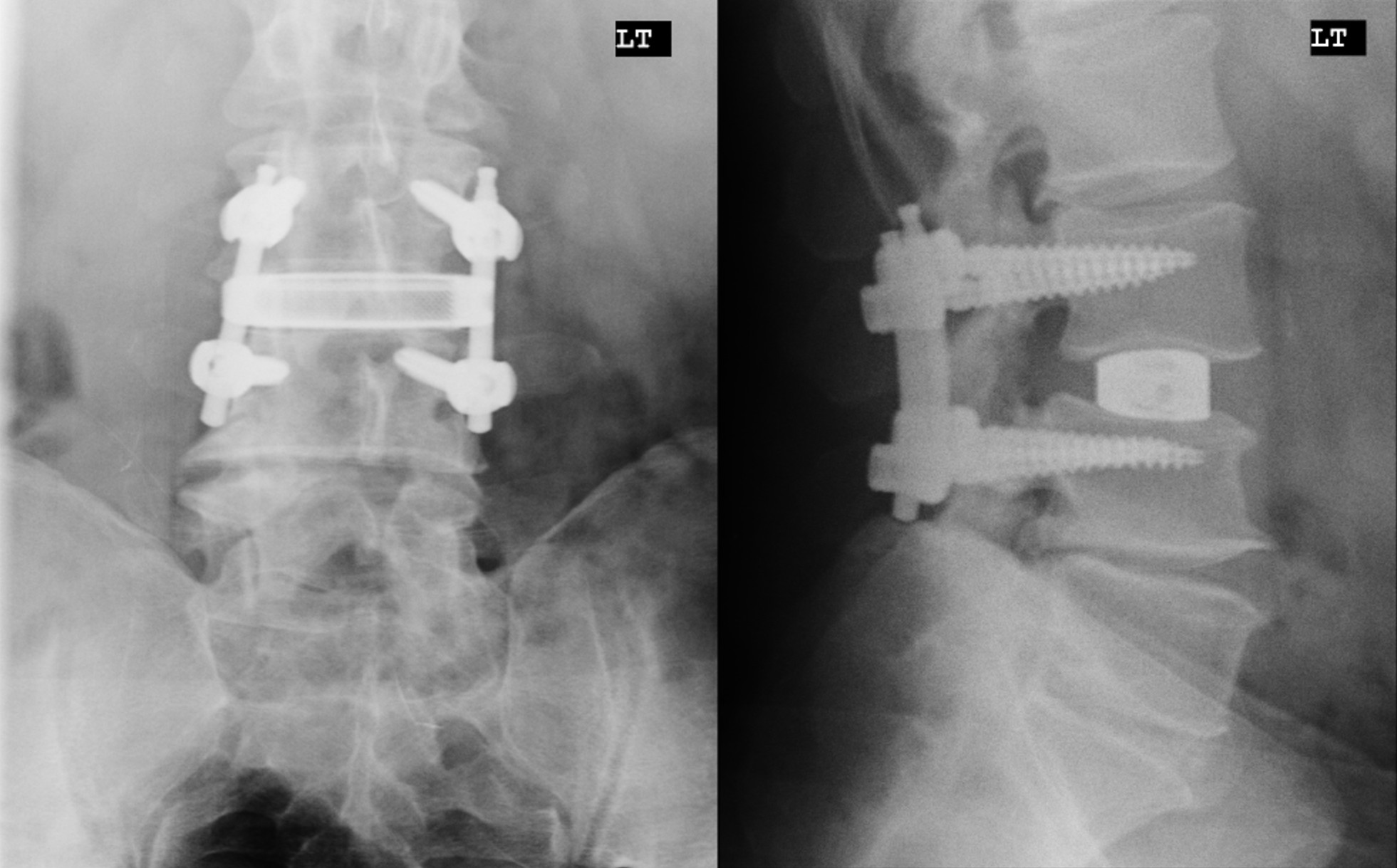When degeneration in the spine results in leg and back pain, our providers may suggest performing a lateral spine fusion. This minimally-invasive procedure helps stabilize the spine, relieving pain by preventing the motion that causes it by removing a damaged disc and fusing together two vertebrae. This procedure is known by three names, LLIF (Lateral Interbody Fusion), DLIF (Direct Lateral Interbody Fusion), and XLIF (Extreme Lateral Interbody Fusion). All three terms refer to the same technique.
What Is Lateral Interbody Fusion?
A lateral interbody fusion begins with an incision made in the waist that permits access to the damaged disc. This incision is used to remove the disc and fill the newly empty space with a piece of bone graft that helps relieve pressure on the nerves and restore the height of the bones. This graft will serve as a joining point between the two vertebrae and help them fuse together to create a newly strengthened spine. This graft will occasionally be held in place with screws and plates to further strengthen the repair. This procedure can remove one or more discs in a single treatment, fusion two or three bones together by doing so.
What Makes A Lateral Interbody Fusion Superior To Other Options?
When it is able to be applied, a Lateral Interbody Fusion is easier on the patient due to its minimally invasive nature. The incision that the procedure is performed through is only one inch wide, and the path used to reach the spine doesn’t interfere with the muscles or nerves of the spine. Patients who undergo an LLIF are typically able to return home the same day, saving valuable time, money, and reducing overall recovery time.
What Conditions Can Be Treated With A Lateral Interbody Fusion?
When a disc becomes damaged through trauma or as the result of a medical condition that does so, the LLIF can be used. The most common conditions treated are scoliosis, spondylolisthesis, degenerative disc disease, and spinal stenosis. These conditions all involve degradation of the intervertebral discs and can often benefit from this treatment. Conditions that cannot be treated with this procedure include severe cases of both spondylolisthesis and scoliosis, and any condition involving discs L5-S1 due to the inability to access them.
How Long Will My Recovery Time Be?
Most patients undergoing this procedure will be able to return home on the day of the procedure. Care is necessary to guarantee that the procedure is successful, and the patient heals well. Bending and twisting must be avoided for the first six weeks following the procedure. Lifting items that weight more than 5 pounds can harm the patient, as can yard work, housework, and sex. The use of tobacco products of any kind must be stopped during the healing process as nicotine impacts the body’s ability to rebuild bone. The patient should not drive until they return for their follow-up appointment.
If you have more questions about Lateral Interbody Fusion, please pick up your phone and give Comprehensive Spine Care a call at 201-634-1811 . Our staff will arrange a visit to one of our three New Jersey locations for an appointment with one of our providers.
In certain situations a fusion is necessary to improve the stability of the spine and restore the natural spinal alignment. An “interbody fusion” involves removing the diseased and dysfunctional disc and replacing it with a spacer which will help restore normal anatomy.
Lateral Interbody Fusion (sometimes known by XLIF, DLIF, LLIF) refers to a minimally-invasive procedure that allows for a fusion to be performed by approaching the spine from the side, thus avoiding disruption of the large muscles of the lower back. A number of spine conditions can be approached in this manner including scoliosis, spondylolisthesis, and disc degeneration.
Among the many advantages of lateral interbody fusion include:
- Smaller incisions
- Less postoperative pain
- Larger spaces, which promote better anatomical correction of deformity
- Higher rates of fusion healing
After surgery:
Once the surgery is complete the patients will spend a few hours in the surgical recovery area for monitoring.
- Patients typically will spend one to two nights in the hospital and are able to walk immediately as they work with a physical therapist.
- A lower back brace may be provided to support the lumbar spine.
All surgical patients at Comprehensive Spine Care are provided with medications prior to the date of surgery with instructions on their post-operative usage. Wound care, medication, and diet instructions for after surgery are also provided upon discharge from the hospital and are also available here.










